Here's how Indian communities fortify their immune system as the chill replaces sunshine. The best part? You can savour some of the fare in Mumbai's faux winter

A Rajasthani dhaba-style meal
If you drop in at 29's outlets in Kemps Corner or Thane until February, you'll find a dish called kacchi haldi ki sabji. Made using fresh turmeric, a winter herb; chopped onion, tomato and garlic paste, the homestyle dish is had with tukkad - a thick wholewheat and bajra flatbread. A typical trucker's winter meal, it's found on the highway dhabas in Rajasthan's Marwar region.
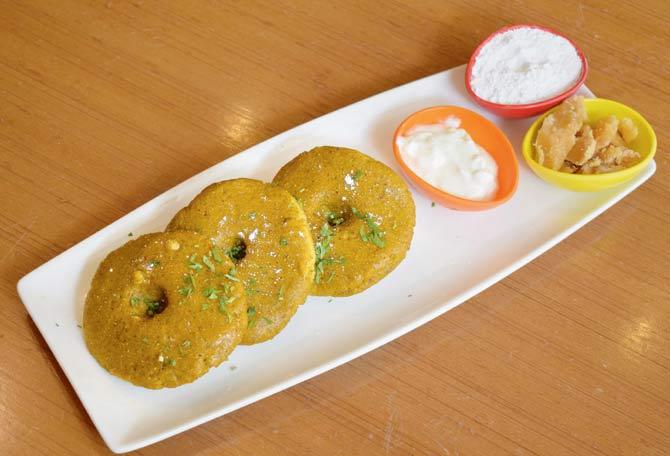
Fogle ke dhokle
"Once the tukkad comes to your table, fresh homemade ghee is poured over it. It's nutritious and apt for the cold winters of the state," says restaurant founder Nishek Jain, who hails from this region. He follows the traditional recipe, with dollops of ghee, which is also used in gheewali dal that accompanies the meal.

Nishek Jain. Pics/Ashish Raje
"My nani would always say, 'ghee is your friend; butter is your enemy'. She was right!" he laughs. Another winter staple that Jain plans to add to the menu is the lesser-known fogle ke dhokle, a dish made by communities living in the Shekhawati region, in northeastern Rajasthan. "Fogle flour is a mix of pulses and ragi. It's mostly had in winters due to its high nutrient value. It can be served with jaggery, powdered sugar, home-made butter, pickle or curd," adds Jain.
Green delights of the northeast
So what if the northeast is inaccessible during winters? Ask for ou tenga aru xoriyoh pator gahori from O'Tenga, an Assamese delivery kitchen run by home chefs Joyee Mahanta and Priyangi Borthakur.
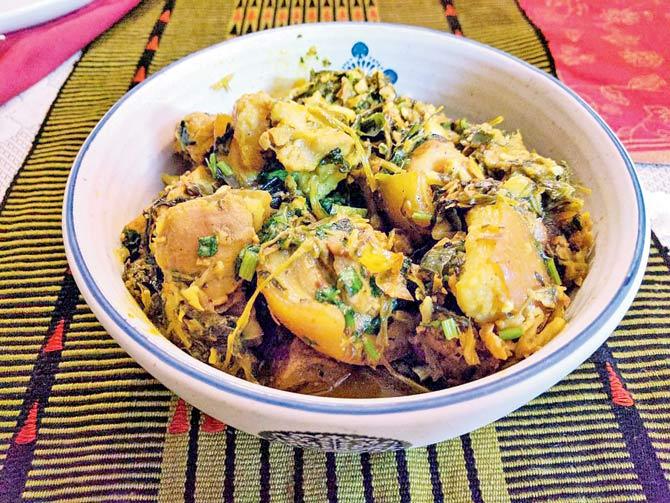
Joyee Mahanta
It features pork cooked with elephant apples and mustard leaves, a rich source of vitamin C. "My aunt's bungalow in Doom Dooma had a vegetable garden where she grew paleng (spinach), xoriyoh paat (mustard leaves) and lai xaak (mustard greens).

Priyangi Borthakur
She would add the soft and fresh spinach leaves to the fish curry or salads, and used lai xaak and xoriyoh paat in pork," says Mahanta, while Borthakur reminisces about gorging on kosu paat jalukia (colocasia leaves with black pepper) during winter in Guwahati.
Tuck into Parsi-style winter fudge
Foodpreneur Perzen Patel aka Bawi Bride's earliest memory of vasanu - a dish of fudge-like consistency that makes your insides feel like they're getting a warm hug - is of flushing it down the toilet.
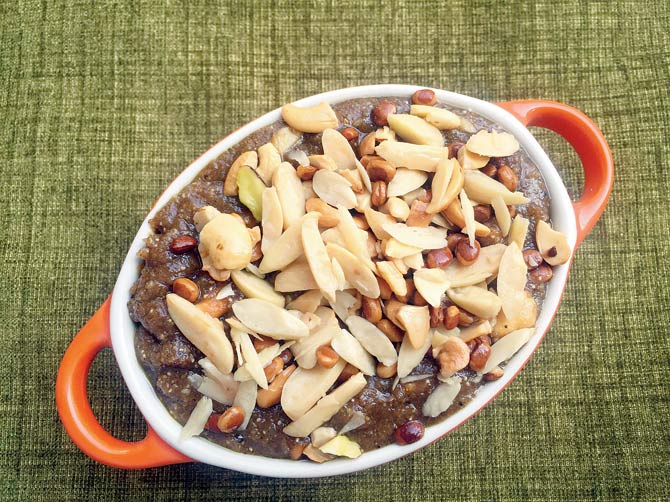
Vasanu
"My mom would dutifully give me a small ball of vasanu to have on the way to the school bus stop but I hated it because it would taste so heaty and spicy. When she discovered what I was doing, I was banned from having it until I turned 18 and actually developed a taste for it," says Patel, who is offering the dish this season in 250gm to 1kg packs ('1,200 per kilo).

Perzen Patel
Over 20 different herbs and roots, five kinds of dry fruits and two kilos of ghee go into making the grainy and nutty dish, says Patel, who learnt the recipe from her mother. "Familiar flavours like dry ginger, lotus stem, dill, and white and black pepper are mixed in with magaz (muskmelon seeds), ganthoda (long pepper root) and singhoda aata (water chestnut flour), among other ingredients. I also add a blended mix of dates and milk for a slight creaminess and an earthy sweetness."
The dish takes anywhere between six hours to a couple of days to prepare depending on whether the spices are ground at home or bought packaged. "All the dry fruits need to be fried in ghee and thinly sliced. Each ingredient also needs to be roasted in ghee for 10 minutes before the next one is added in. In the olden days, grandmothers would make vasanu on a kakra no chulo (thermal lamp), and that would take even more time."
Of Bengali kochuris and Oriya pithas
While winter days in West Bengal can be rather biting, home chef Ananya Banerjee remembers them as the best days, since it meant relishing piping hot and crisp koraishutir kochuri, made using freshly harvested peas available only in this season.
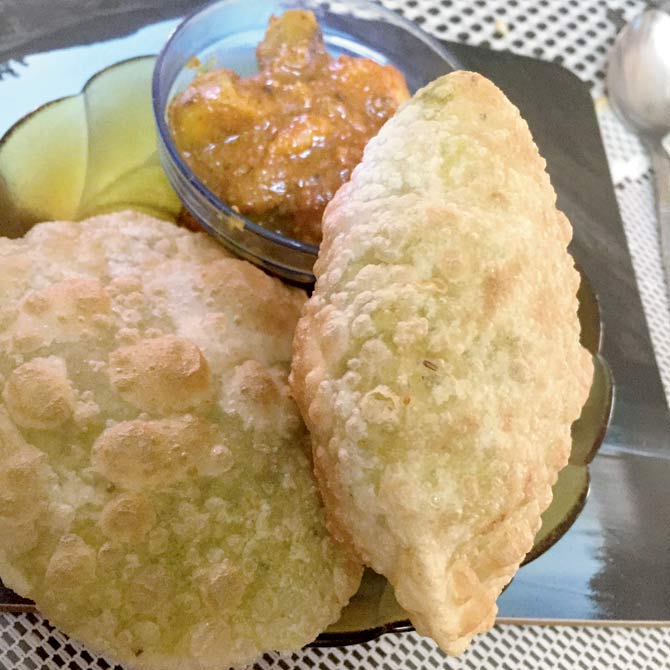
Koraishutir kochuri
"My mother would usually order it from a local mishtir dokan (snack shop) or make it at home during holidays. When the puffed kochuri would arrive on my plate, I would puncture it with a spoon and watch all the steam come out. It was fascinating," reminisces Banerjee, who learnt the recipe from her grandmother. "It's a tedious process. You have to first grind the peas, then sauté them till the mash changes colour and consistency.

Ananya Banerjee
It's then stuffed in a dough and deep-fried," adds the home chef, who, however, serves the dish at her Bengali pop-ups as a shallow-fried stuffed matar paratha. Having spent a few years in Odisha, Banerjee also relishes a variety of pitha, a type of rice cake, made during harvest festivals symbolising the onset of winter.
One of them is the manda pitha, an Oriya-style steamed version of a modak filled with coconut, chenna (paneer) and jaggery, which is known to boost your immunity. "Some also stuff it with dal for added nutrition and shape the pitha as a crescent moon," she recalls.
Meaty flavours from the north
Born into a Sikh family and raised in Srinagar, home chef Jasleen Marwah grew up on a healthy dose of Punjabi and Kashmiri fare. When Srinagar would get covered in snow, Marwah remembers being holed up at home, enjoying a piping hot bowl of chhit, a traditional Punjabi curry made with finely mashed ginger, garlic, salt and milk.
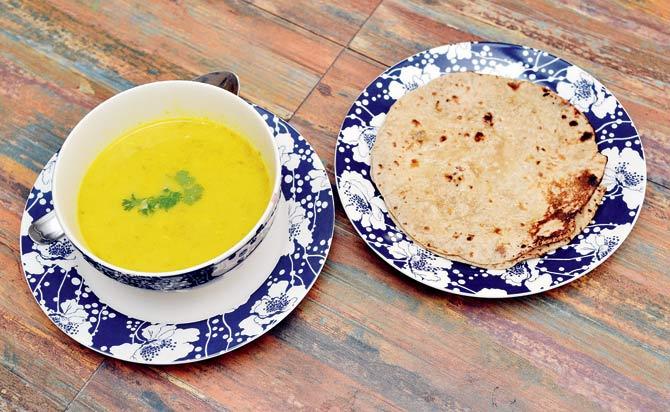
Chhit
"It would be of soupy consistency, so, I would tear phulkas and soak them in it. The curry is so light, I'd easily have three-four phulkas with it," says Marwah, who moved to Mumbai over a decade ago but still rustles up the dish every winter. "It's a family recipe and can be prepared quickly. We'd make it as a cure for cough and cold in winters," says Marwah. Meanwhile, a Kashmiri winter staple would be harissa, featuring mutton slow-cooked till it turned silk smooth like the Bohri khichda.
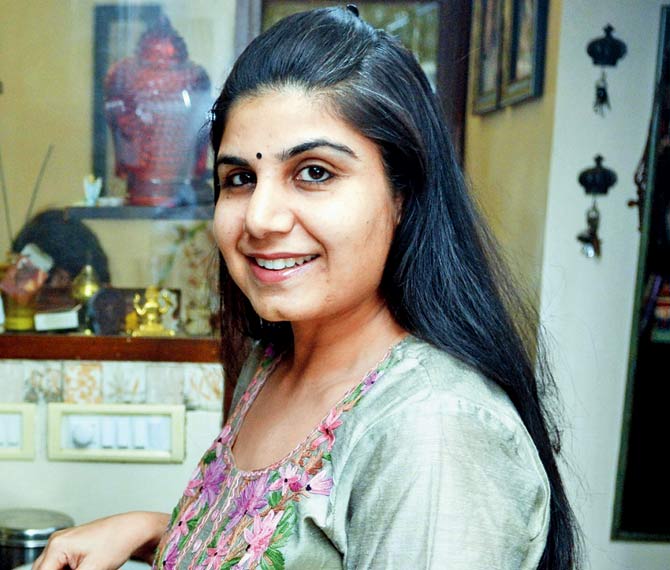
Jasleen Marwah. Pics/Datta kumbhar
"We would top it with onion and have it with Kashmiri bread," says Marwah, adding that meaty fare is preferred this time of the year, and it would be laced with vegetables and fish that were dried during summer. Both dishes are yet to make it to her pop-ups held at her Goregaon residence, but you can gorge on Tabakh Maaz, served with a hearty shorba.
 Subscribe today by clicking the link and stay updated with the latest news!" Click here!
Subscribe today by clicking the link and stay updated with the latest news!" Click here!









